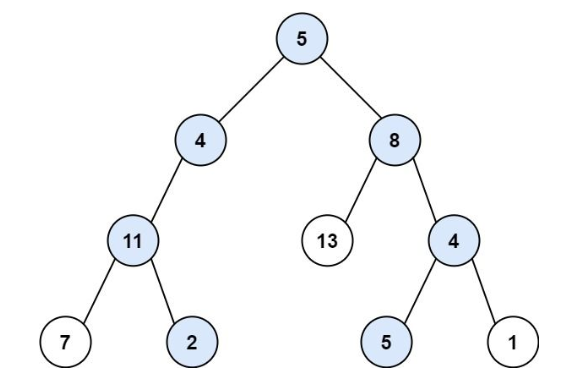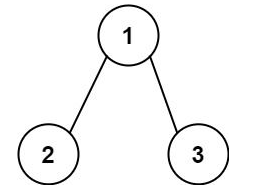113. 路径总和 II
题目描述
给你二叉树的根节点 root 和一个整数目标和 targetSum ,找出所有 从根节点到叶子节点 路径总和等于给定目标和的路径。
叶子节点 是指没有子节点的节点。
示例 1:

输入:root = [5,4,8,11,null,13,4,7,2,null,null,5,1], targetSum = 22 输出:[[5,4,11,2],[5,8,4,5]]
示例 2:

输入:root = [1,2,3], targetSum = 5 输出:[]
示例 3:
输入:root = [1,2], targetSum = 0 输出:[]
提示:
- 树中节点总数在范围
[0, 5000]内 -1000 <= Node.val <= 1000-1000 <= targetSum <= 1000
方法一:DFS
我们从根节点开始,递归遍历所有从根节点到叶子节点的路径,并记录路径和。当遍历到叶子节点时,如果此时路径和等于 targetSum,则将此路径加入答案。
时间复杂度
java
class Solution {
private List<List<Integer>> ans = new ArrayList<>();
private List<Integer> t = new ArrayList<>();
public List<List<Integer>> pathSum(TreeNode root, int targetSum) {
dfs(root, targetSum);
return ans;
}
private void dfs(TreeNode root, int s) {
if (root == null) {
return;
}
s -= root.val;
t.add(root.val);
if (root.left == null && root.right == null && s == 0) {
ans.add(new ArrayList<>(t));
}
dfs(root.left, s);
dfs(root.right, s);
t.remove(t.size() - 1);
}
}cpp
class Solution {
public:
vector<vector<int>> pathSum(TreeNode* root, int targetSum) {
vector<vector<int>> ans;
vector<int> t;
function<void(TreeNode*, int)> dfs = [&](TreeNode* root, int s) {
if (!root) return;
s -= root->val;
t.emplace_back(root->val);
if (!root->left && !root->right && s == 0) ans.emplace_back(t);
dfs(root->left, s);
dfs(root->right, s);
t.pop_back();
};
dfs(root, targetSum);
return ans;
}
};python
class Solution:
def pathSum(self, root: Optional[TreeNode], targetSum: int) -> List[List[int]]:
def dfs(root, s):
if root is None:
return
s += root.val
t.append(root.val)
if root.left is None and root.right is None and s == targetSum:
ans.append(t[:])
dfs(root.left, s)
dfs(root.right, s)
t.pop()
ans = []
t = []
dfs(root, 0)
return ans